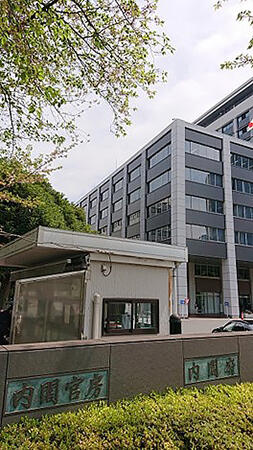
Council for Science, Technology and Innovation (CSTI). On January 19, a specialist committee on world-class research universities compiled the final draft of institutional designs, including the university selection policy for the 10-trillion-yen fund. The Cabinet Office compiled and reported on a package for comprehensive promotion of research universities with a regional core and distinctive characteristics, falling outside the fund's concern with International Research Universities of Excellence.
The Ministry of Education, Culture, Sports, Science and Technology (MEXT) will submit a related bill to the Diet for the establishment of the International Research Universities of Excellence (tentative name) system and deregulation. The 10-trillion-yen fund is expected to earn an annual investment profit of around 300 billion yen from 2024 onwards. Of this, 20 billion yen will be allocated to support doctoral students nationwide, while from the remaining investment profits, several tens of billions of yen will be allocated to International Research Universities of Excellence. With the final proposal, the plan is to first select a few schools and then gradually increase that number.
The proposal presents three perspectives for university selection. They should become universities with global visibility by continuing to create and develop new academic fields with an environment where young researchers can study fully independently, as well as developing talented doctoral students based on cross-disciplinary curriculum designs. They should provide an attractive research environment and a place where young researchers in Japan and abroad can play an active role, ensuring diversity so that they strongly feel "I want to study here." They should develop activities while constantly engaging in dialogue with diverse entities in society by drawing up a bold vision for the transition to a next-generation social structure, including the creation of new growth areas by generating knowledge that is the source of emerging technologies, and contributing to the resolution of global issues such as carbon neutrality and DX, as well as the development of entrepreneurs and doctoral human resources who are active in a wide range of industries.
Each university is to present its strategies and visions for realizing these three perspectives, which will be evaluated and approved by the Minister of Education, Culture, Sports, Science and Technology after listening to the views of the CSTI. To create a virtuous cycle in which external funds are introduced in various forms, and the funds are reinvested in research infrastructure that generates knowledge that does not directly lead to social value, such as in new academic fields and the development of young researchers, the government will strengthen its autonomous financial base by achieving an annual business growth rate of 3% and expanding university-specific funds.
As for the governance system, it will be mandatory to establish a council (governing board), university president, faculty officer (provost), director in charge of project finance (CFO), and auditor that will act as the university's decision-making body. The amount to be allocated from the fund will be determined according to the accomplishments of the department and the amount of contributions to the university fund. "CSTI is responsible for bringing this project to a successful conclusion by standing between universities and the government, encouraging universities, and taking into account harsh opinions from the government side," says Kazuhito Hashimoto, a CSTI expert.
The package for comprehensive promotion, meanwhile, supports regional core universities and those with strengths in specific fields from the following three perspectives: strengthening the universities' own initiatives, strengthening the linkage mechanisms, and promoting the universities' activities in their local communities. 46.2 billion yen (this fiscal year's supplementary budget is 17.3 billion yen) is set aside in the next fiscal year's budget bill. In addition to strengthening the universities' own basic initiatives, it includes measures to utilize various policy programs, such as collaborations with local governments and companies, collaborations with ministry projects other than those of MEXT, and utilization of special zones.
Model case studies in agriculture recommend the training of human resources to become local leaders in regional revitalization human resources projects, the creation of mechanisms for strategically collecting and utilizing high-quality data through advanced material research infrastructure, and the utilization of projects to support the formation of co-creative workplaces for developing social implementation systems. Moreover, the regional collaboration system within the universities will be strengthened through projects to develop environments for creating innovation at regional core universities. Development and improvement of strategic smart agricultural technologies and allied technologies (applications submitted by private businesses) will be undertaken to develop and improve agriculture-related technologies. 1,000 local projects (applications submitted by local governments) will be undertaken to launch community-based businesses. Applications for special zones will be made to accelerate the social implementation of research results by private companies using university-owned land and such.
The package presents various support programs for universities and provides seamless support by promoting information collaboration and accompanying support among ministries and agencies. It will also promote the establishment of intra-regional industry-academia-government networks, as well as cooperation among networks. Kiyohiro Houkin, President of Hokkaido University, which aims to become a regional core university that contributes to solving global issues, comments that they have set up a social and regional emergence headquarters within the university and are promoting collaboration with the community at various levels, but points out that "The readiness of the local government is inadequate. Even at the prefectural office, there is only one person in charge of industry-academia-government collaboration." Takayuki Kobayashi, Minister of State for Science and Technology Policy, said that "The working group looking into the package also includes the municipal administrative bureaus of the Ministry of Internal Affairs and Communications. The heads have different levels of enthusiasm, so the government seeks to conduct as much outreach as possible."
This article has been translated by JST with permission from The Science News Ltd.(https://sci-news.co.jp/). Unauthorized reproduction of the article and photographs is prohibited.




